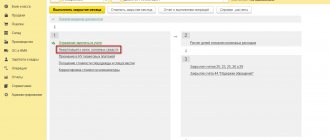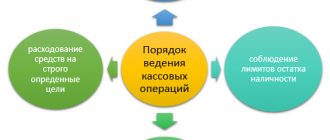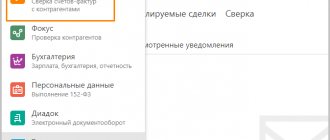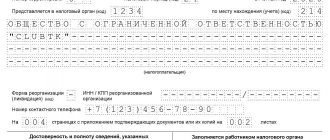Who will be affected by the new clarifications?
Letter No. SD-4-3/7484 of the Federal Tax Service of Russia dated April 19, 2021 is devoted not only to the preparation of a VAT return for scrap metal in 2018, but also applies to all VAT tax agents listed in paragraph 8 of Art. 161 of the Tax Code of the Russian Federation.
Let us remember that we are talking about those who deal with:
- with raw animal skins;
- scrap and waste of ferrous metal and non-ferrous metal, secondary aluminum and its alloys.
That is, this:
- sellers who pay VAT (except for those exempt from calculation and payment obligations);
- buyers who pay VAT and at the same time tax agents (except for those exempt from calculation and payment obligations);
- buyers who are VAT non-payers and at the same time tax agents (it does not matter whether they fulfill the payer’s obligations for calculating and paying VAT or other obligations).
In the said letter, tax officials clarified how each of these categories should correctly fill out a VAT return for the sale of scrap metal in 2021. Let us remind you that the form of this report was approved by order of the Tax Service of Russia dated October 29, 2014 No. ММВ-7-3/558.
Also see “VAT return: due dates in 2021”.
What changes in legislation have affected operations related to the sale of scrap?
Until 2021, the sale of scrap ferrous and non-ferrous metals was an operation exempt from the accrual and payment of VAT.
However, starting from 01/01/2018, sub. 25 clause 2 art. 149 of the Tax Code of the Russian Federation was abolished, as a result of which the sale of scrap was subject to VAT. This happened with the entry into force of the law “On Amendments...” dated November 27, 2017 No. 335-FZ. Its provisions not only abolished the scrap tax exemption, but also defined a completely new category of tax agents. Now these are those who purchase scrap metal, be it non-ferrous or ferrous metal, secondary aluminum and its alloys, as well as raw hides.
IMPORTANT! Transactions related to the sale of raw animal skins were not previously given preferential treatment. VAT was calculated and paid by the seller in the usual manner.
Next, we will look at how the functions of a VAT tax agent will fall on the business entity purchasing scrap and how it can cope with them.
How to fill out for sellers who pay tax
This category does not reflect the sale of scrap metal in the 2018 VAT return in Section 3, since the tax base is not established.
But there are three exceptions:
- para. 7 paragraph 8 art. 161 of the Tax Code of the Russian Federation (inaccurate entry by the payer-seller in the “primary” of the phrase “Without VAT”);
- para. 8 clause 8 art. 161 of the Tax Code of the Russian Federation (loss of the right to exemption from the duties of the payer or to a special regime);
- sale of these goods to ordinary individuals without individual entrepreneur status.
At the same time, transactions with scrap metal must be reflected in the sales book, as well as Sections 1 and 9 of the VAT return. When issuing adjustment invoices - in Section 8.
How to fill out for buyers-payers-tax agents
Now about how to fill out a VAT return with scrap metal to tax agents as paying buyers. You'll have to try hard here.
The Federal Tax Service explains that the calculated tax and deductions for it (clauses 3, 5, 8, 12 and 13 of Article 171 of the Tax Code of the Russian Federation) must be shown in the corresponding lines of Sections 3, 8 and 9 of the declaration. And don't forget to fill out Section 1.
ATTENTION
Tax officials pay attention: if purchased scrap metal, etc., is involved in raw materials commodity-export operations, then VAT is deducted in accordance with clause 3 of Art. 172 of the Tax Code of the Russian Federation. Therefore, deductions for the sale of raw materials are indicated in Sections 4, 5, 6 of the VAT return, respectively.
Filling out VAT returns for VAT payers and tax agents
Tax agents, who are also VAT-paying buyers, need to be very careful and try very hard when filling out a VAT return for scrap metal.
In the form of a table, we will show which sections are required to be completed by buyers who pay VAT and who are also tax agents:
| Section name | What is reflected |
| Section 3, 8, 9 | Data is reflected on the sale of scrap in production, as well as the sale of raw materials for export. |
| Section 4, 5, 6 | These sections reflect information calculated by buyers of scrap when purchasing it, VAT deductions |
How to fill out for non-paying tax agent buyers
In this case, the tax authorities propose to fill out a VAT return (scrap) in 2021 on the basis of temporary rules until appropriate amendments are made to the aforementioned order dated October 29, 2014 No. ММВ-7-3/558, which establishes the declaration form, format and rules for completing this report.
In Section 2, the sales of scrap metal should be reflected in the VAT return as follows:
- lines 010 to 030 – leave empty;
- on line 060, bring the final amount of tax to be transferred to the treasury in accordance with clause 4.1 of Art. 173 Tax Code of the Russian Federation;
- on line 070, indicate the new code 1011715 (it is used in the sale of raw animal skins/scrap and waste of ferrous metal and non-ferrous metal, second aluminum and its alloys).
As a result, this category includes in its declaration:
- title plate (in the column “At location (registration)” indicate code 231);
- Section 1 with dashes;
- Sections 2 and 9.
The Federal Tax Service also made an important clarification regarding the VAT declaration (sale of scrap metal) in 2021: invoices from sellers for advance payments, for which VAT is deducted by buyers, are shown as a negative number in Section 9.
As stated in the letter from the Federal Tax Service - “... until appropriate changes are made to the Control ratios of the VAT return indicators. From the 1st quarter of 2021, the procedure will change: entries on invoices reflected in Section 9, when transferring payment (partial payment) on account of future deliveries (+ based on clauses 5 and 13 of Article 171 of the Tax Code of the Russian Federation) are made in Section 8 for the correct application of deductions.
ADVICE
If you reflected the sale of scrap in your VAT return for the 1st quarter of 2021 without taking into account the clarifications of the Federal Tax Service of Russia discussed above, then we strongly advise you to submit an update for this period.
Please note that the procedure for applying VAT by tax agents under clause 8 of Art. 161 of the Tax Code of the Russian Federation is also set out in the letter of the Federal Tax Service dated January 16, 2021 No. SD-4-3/480.
Also see “VAT return for the 1st quarter of 2021: due date and filling out the form.”
Which section of the declaration and who should fill it out?
The algorithm for filling out a VAT return is described in the letter of the Federal Tax Service “On the procedure for filling out a VAT return by tax agents specified in paragraph 8 of Article 161 of the Tax Code of the Russian Federation” dated 04/19/2018 No. SD-4-3 / [email protected] :
Note! The VAT declaration was updated by order of the Federal Tax Service dated August 19, 2020 No. ED-7-3/ [email protected] The form is used from the reporting campaign for the 4th quarter of 2021.
You will find a line-by-line algorithm with examples of filling out all twelve sections of the report in ConsultantPlus. Trial full access to the system can be obtained for free.
To uniformly reflect transactions for the sale of scrap in invoices, purchase and sales books, special codes are used:
How to fill out an invoice for scrap metal, read here.
Find out about the coding of transactions in the VAT return by following the link .
conclusions
The VAT return for the first quarter must be completed taking into account the new requirements of the Federal Tax Service. If you have already reported for VAT, it is safer to submit an “adjustment”.
Sellers are VAT payers
They do not determine the tax base, so in Section 3 the sale of scrap metal is not shown. As part of the declaration, they must submit the title page, section 1 and section 9.
Buyers – tax agents – VAT payers
The accrual of tax and the deductions due to it must be reflected in section 3. The title page, sections 1, 3, 8 and 9 are submitted as part of the declaration.
Buyers – tax agents – VAT evaders
Indicate the amount of tax payable to the budget on line 060 of section 2. The new transaction code on line 070 of section 2 is 1011715. The declaration includes the title page, section 1 with dashes, as well as sections 2 and 9. Invoices for advance payment, VAT for which buyers accept deductions, are reflected in section 9 with a minus.
Read also
27.12.2017
Sales of scrap metal in 2021 in 1C: Accounting 8 CORP edition 3.0
Federal Law No. 335-FZ of November 27, 2017 introduced changes to the first and second parts of the Tax Code of the Russian Federation (TC RF).
In particular, changes were made to Chapter 21, which relate to the sale of scrap metal. In Article 149 “Transactions not subject to taxation”, subparagraph 25 of paragraph 2 - “sale of scrap and waste of ferrous and non-ferrous metals” has been declared invalid since January 1, 2021.
But that is not all. In Article 161 “Features of determining the tax base by tax agents”, a new paragraph 8 has appeared, according to which, now, when VAT taxpayers sell raw animal skins, as well as scrap and waste of ferrous and non-ferrous metals in the territory of the Russian Federation, the tax base is determined based on the cost of the goods sold including tax. Moreover, the tax base is determined by tax agents, and buyers of these goods are recognized as tax agents. These tax agents are required to calculate and pay the appropriate amount of tax to the budget. The amount of tax payable to the budget is determined based on the results of each tax period (clause 4.1 of Article 173 of the Tax Code of the Russian Federation).
When taxpayers sell raw hides and scrap metal, as well as when receiving payment for future deliveries, the taxpayer draws up invoices without taking into account tax amounts. Invoices contain an inscription or a stamp “VAT is calculated by the tax agent” (Clause 5 of Article 168 of the Tax Code of the Russian Federation). Such an invoice is a document that serves as the basis for the buyer to accept the calculated amounts of tax for deduction (clause 1 of Article 169 of the Tax Code of the Russian Federation). Tax amounts calculated by tax agents are subject to deductions (clause 3, clause 12 of Article 171 of the Tax Code of the Russian Federation).
Now let’s use a specific example to look in detail from the point of view of the seller and from the point of view of the buyer, how the above changes in legislation are implemented in the 1C: Accounting 8 CORP edition 3.0 program. This functionality is not planned to be implemented in other accounting programs, in accordance with the statement of 1C Company.
Let's look at an example.
The Seller organization applies the general taxation regime - the accrual method and is a VAT payer. In January 2021, the Seller organization sold 10 tons of scrap metal obtained from the dismantling of fixed assets to the Buyer organization. The contract price is 150,000 rubles excluding VAT. The contract provides for an advance payment of 100%. The Buyer organization also applies the general taxation regime - the accrual method and is a VAT payer. The purchased scrap metal is used by the organization to produce VAT-taxable products.
First, let's look at this situation from the point of view of a scrap metal seller. In the 1C: Accounting 8 KORP version 3.0 program, starting with release 3.0.57, a new checkbox appeared in the Program Functionality form: Buyers of an organization - tax agents for VAT. If the organization sells scrap metal or raw animal skins, this checkbox must be enabled. The checkbox can only be selected if the program maintains accounting for contracts. A fragment of the form Functionality of the program is shown in Fig. 1.
Picture 1.
This functionality allows you to enable the Buyer acts as a tax agent for the payment of VAT checkbox in an agreement with a buyer. Such an agreement should be used in the program when selling scrap metal and raw animal skins. An example of filling out a contract with a buyer is shown in Fig. 2.
Figure 2.
The Seller organization issued an invoice to the Buyer organization for scrap metal. The invoice was paid in full on January 15, 2021. When funds are received into the organization's current account, the program creates (downloads from the client bank) a document Receipt to the current account with the transaction type Payment from the buyer. Since the document contains an agreement with the buyer with the checkbox enabled The buyer acts as a tax agent for the payment of VAT, the program understands that the seller does not charge the buyer with VAT, since the amount of VAT will be calculated by the buyer-tax agent using a calculation method. Therefore, the document indicates the VAT rate of 18/118 and the VAT amount of 0 rubles. Filling out the document Receipt to the current account and the result of its implementation are presented in Fig. 3.
Figure 3.
The seller, upon receipt of payment for a future supply of scrap metal, in accordance with clause 1 of Art. 167 of the Tax Code of the Russian Federation, must issue an invoice for the advance payment and transfer it to the buyer. The document Invoice issued with the type For advance payment is created in the program in the usual manner - automatically using special processing Registration of invoices for advance payment. Since we are using a special agreement with the buyer (the buyer is a tax agent), there are no details of the VAT rate and amount in the tabular part of the document. Transaction type code - 33 Advances received for goods, clause 8 of Art. 161 NK. In accordance with clause 3.1 of Art. 166 of the Tax Code of the Russian Federation, the seller does not charge VAT, so the document does not generate any accounting entries, but only creates entries in the Sales VAT accumulation register (sales book). The document Invoice issued with the type For advance payment is presented in Fig. 4.
Figure 4.
In accordance with the law (clause 5 of Article 168 of the Tax Code of the Russian Federation), in the invoice, when selling scrap metal and raw animal skins by a VAT taxpayer, instead of the tax rate, the text is indicated - VAT is calculated by the tax agent. The printed form of the Invoice document issued is shown in Fig. 5.
Figure 5.
To reflect the fact of shipment of scrap metal, the program uses the Sales document with the transaction type Goods. The header of the document indicates the buyer of scrap metal and the agreement with him. In the tabular part, the item is selected - scrap metal, its quantity and price. Please note that the table section does not include the VAT rate and amount. Scrap metal accounting account - 10.06 “Other materials”. And since this is the sale of materials, then account 91.01 “Other income” is selected as the income account with analytics (cost item) Sales of other property (materials), expense account and VAT account - 91.02 “Other expenses”. In the configured program, these accounting accounts are installed automatically. When carried out, the document will write off the sold scrap metal, accrue revenue and offset the advance payment. VAT is not charged (clause 3.1 of Article 166 of the Tax Code of the Russian Federation), since calculating VAT is the responsibility of the buyer. An entry will only be generated in the Sales VAT register (in the sales book) with a VAT rate of 18/118. The Implementation document and the result of its implementation are presented in Fig. 6.
Figure 6.
The seller in accordance with clause 1 of Art. 167 of the Tax Code of the Russian Federation, must issue an invoice for sales and transfer it to the buyer. In the created Invoice document, the issued transaction type code is 34 Sales of goods, clause 8 of Art. 161 NK. The document Invoice issued is shown in Fig. 7.
Figure 7.
In printed form of the document, as it should be when selling goods specified in clause 8 of Art. 161 of the Tax Code of the Russian Federation, instead of the tax rate there is an inscription - VAT is calculated by the tax agent. The printed form of the Invoice document issued is shown in Fig. 8.
Figure 8.
Let's look at the sales book of the "Seller" organization for the first quarter of 2018. In part of our example, there are two entries in the book: − transaction type code 33 - Advances received for goods, clause 8 of Art. 161 NK; − transaction type code 34 - Sales of goods, clause 8 of Art. 161 NK. As expected, column 14 is filled in in both records. The sales book of the “Seller” organization is shown in Fig. 9.
Figure 9.
Everything turned out to be quite simple with the scrap metal seller. Now let's look at what actions a scrap metal buyer must perform in the program. The process of purchasing scrap metal and raw animal skins is automated in the 1C: Accounting 8 CORP version 3.0 program, starting with release 3.0.60.
The buyer of scrap metal should also look at the Program Functionality form and select (if not already installed) the Organization - tax agent for VAT checkbox on the Calculations tab.
A fragment of the form Functionality of the program is shown in Fig. 10.
Figure 10.
Enabling this functionality allows you to enable the Organization acts as a tax agent for the payment of VAT checkbox in the agreement with the supplier. You must select the type of agency agreement. In this case, we are interested in the Sale of goods (clause 8 of Article 161 of the Tax Code of the Russian Federation). We are not interested in the generalized name of goods for the tax agent’s invoice, since in this case the buyer, the tax agent, does not draw up an invoice. Such an agreement must be used in the program when purchasing scrap metal and raw animal hides.
An example of filling out an agreement with a scrap metal supplier is shown in Fig. eleven.
Figure 11.
When transferring funds as an advance payment to the seller's current account, the program creates (downloads from the client bank) a document Write-off from the current account with the transaction type Payment to the supplier. Filling out the document Write-off from the current account and the result of its execution are presented in Fig. 12.
Figure 12.
The seller issues an invoice for the advance payment and transfers it to the buyer. The document Invoice received with the type For advance payment is created in the program on the basis of the document Write-off from the current account to which the advance was paid. VAT rate 18/118 and transaction type code - 41 Advances issued for goods, clause 8 of Art. 161 Tax Codes are entered into the document automatically. In accordance with paragraph 8 of Art. 161 of the Tax Code of the Russian Federation, the buyer-tax agent must calculate VAT using a calculation method. At the same time, in accordance with paragraph 3 of Art. 171 of the Tax Code of the Russian Federation, a tax agent can accept amounts of calculated VAT for deduction.
Therefore, when posting a document in accounting, VAT will be charged on the credit of account 68.52 “Tax agent VAT on certain types of goods” (a new account has appeared) in correspondence with the debit of account 76.AB “VAT on advances and prepayments”, and immediately, with In the Reflect VAT deduction in the purchase book checkbox, it will be deducted by making a reverse posting. Accordingly, the document will generate entries in the Sales VAT accumulation registers (sales book) and Purchase VAT accumulation registers (purchase book).
The document Invoice received with the type For advance payment and the result of its implementation are presented in Fig. 13.
Figure 13.
To reflect the fact of receipt of scrap metal at the organization's warehouse, the program uses the document Receipt with the transaction type Goods.
The header of the document indicates the scrap metal seller and the agreement concluded with him. In the tabular part, the item of scrap metal is selected, its quantity and price, the VAT rate is 18%. The buyer's scrap metal account is 10.01 “Raw materials and materials”, VAT account is 19.03 “VAT on purchased inventories”. An invoice received from a scrap metal seller is registered in the usual way in the “basement” of the document (the document Invoice received is created). When posting the Receipt document, it will credit the purchased scrap metal to account 10.01, offset the advance and, since VAT can be deducted, take into account the calculated amount of VAT in the debit of account 19.03 in correspondence with the credit of account 76.NA “Calculations for VAT when performing the duties of a tax agent " An entry will be generated in the VAT register presented. The document Receipt and the result of its implementation are presented in Fig. 14.
Figure 14.
Let's look at the document Invoice received. Operation type code - 42 Receipt of goods, clause 8 of Art. 161 NK. The buyer is a tax agent, in accordance with clause 8 of Art. 161 of the Tax Code of the Russian Federation, must calculate VAT. Therefore, when posted, the document will generate an accounting entry for the amount of calculated VAT on the credit of account 68.52 in correspondence with the debit of account 76.NA (account 76.NA was closed) and will make an entry in the VAT Sales register (sales book). The document Invoice received is presented in Fig. 15.
Figure 15.
The buyer-tax agent calculated VAT on the advance payment for scrap metal and calculated VAT upon receipt of scrap metal (on sale). Therefore, firstly, in accordance with paragraph 8 of Art. 171 of the Tax Code of the Russian Federation, he has the right to recover VAT from the advance; secondly, in accordance with clause 3 of Art. 171 of the Tax Code of the Russian Federation, he has the right to deduct the calculated VAT upon receipt of goods.
To do this, at the end of the quarter he will need the regulatory document Formation of purchase ledger entries. The document is filled out automatically by clicking the “Fill out document” button.
The document will “see” that an advance was paid and an invoice for the advance was received from the scrap metal seller, that upon receipt of scrap metal the advance was offset, and on the Advances received tab it will prepare a line for recovering VAT on the advance.
The document will “see” that scrap metal has been received by the organization (type of value Goods (tax agent)), an invoice for sales has been received from the scrap metal seller and VAT has been calculated, and on the Tax Agent tab the Tax Agent will prepare a line for accepting VAT for deduction.
Accordingly, when posted, the document will generate two entries in accounting: − restoration of VAT calculated on the advance (Dt 68.52 - Kt 76.AB); − acceptance for deduction of VAT calculated upon receipt (Dt 68.52 - Kt 19.03). The document will also not forget to create two entries in the Purchase VAT accumulation register (in the purchase book). The document Formation of purchase ledger entries and the result of its implementation are presented in Fig. 16.
Figure 16.
The buyer accepted for deduction of VAT on the advance payment issued and accepted for deduction of VAT on sales, therefore, in accordance with paragraphs. 3 p. 3 art. 170 of the Tax Code of the Russian Federation, it must restore the VAT accepted for deduction from the advance.
To do this, at the end of the quarter you will need another regulatory document Formation of sales book entries, which is also filled out automatically.
The document will “see” that it was accepted for deduction of VAT on the advance payment and was accepted for deduction of VAT on sales, and will prepare the corresponding line in the tabular section.
When posted, the document will generate an accounting entry for the restoration of VAT on the advance payment issued (Dt 76.VA - Kt 68.52) and will make an entry in the VAT Sales register (in the sales book). The document Formation of sales book entries and the result of its implementation are presented in Fig. 17.
Figure 17.
The buyer of scrap metal and raw hides will not have to pay anything to the taxpayer budget, but he will make a lot of entries in the VAT accounting books.
Let's start with the sales book. It contains three entries: − transaction type code 41 — Advances issued for goods, clause 8 of Art. 161 NK; − transaction type code 43 - Refund, offset of advance payments for goods, clause 8 of Art. 161 NK; − transaction type code 42 - Receipt of goods, clause 8 of Art. 161 NK. The sales book of the “Buyer” organization is shown in Fig. 18.
Figure 18.
Let's look at the purchase book. It also contains three entries with the same transaction codes: − transaction type code 41 - Advances issued for goods, clause 8 of Art. 161 NK; − transaction type code 43 - Refund, offset of advance payments for goods, clause 8 of Art. 161 NK; − transaction type code 42 - Receipt of goods, clause 8 of Art. 161 NK. The purchase book of the “Buyer” organization is shown in Fig. 19.
Figure 19.
As we can see, the program worked correctly. The developers coped with the difficult task.






